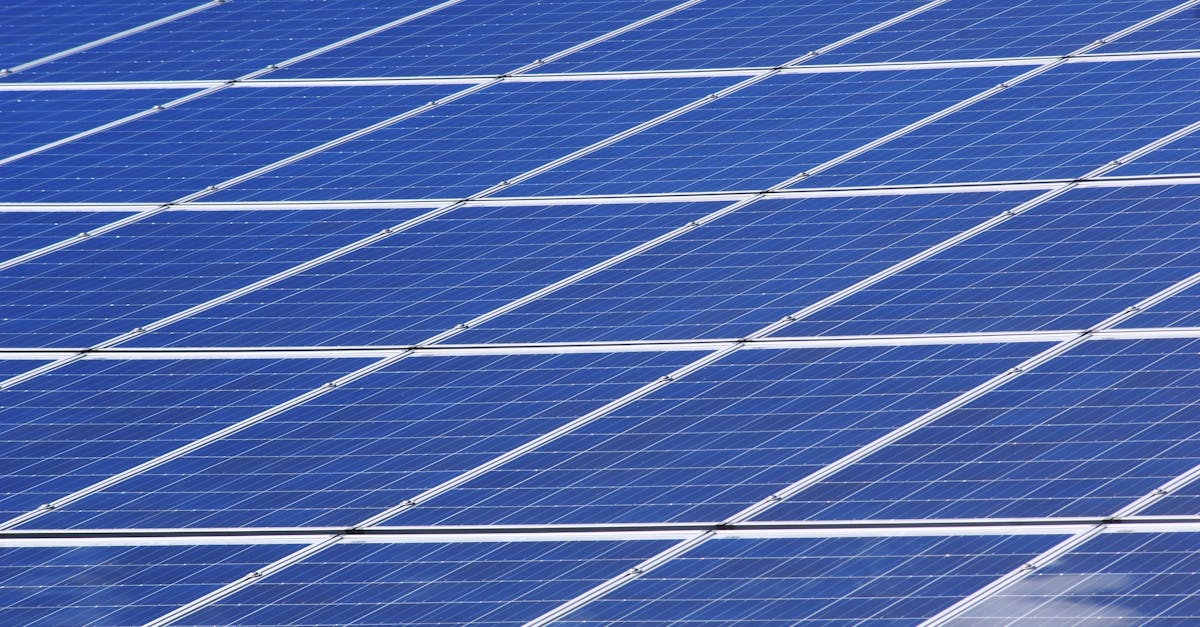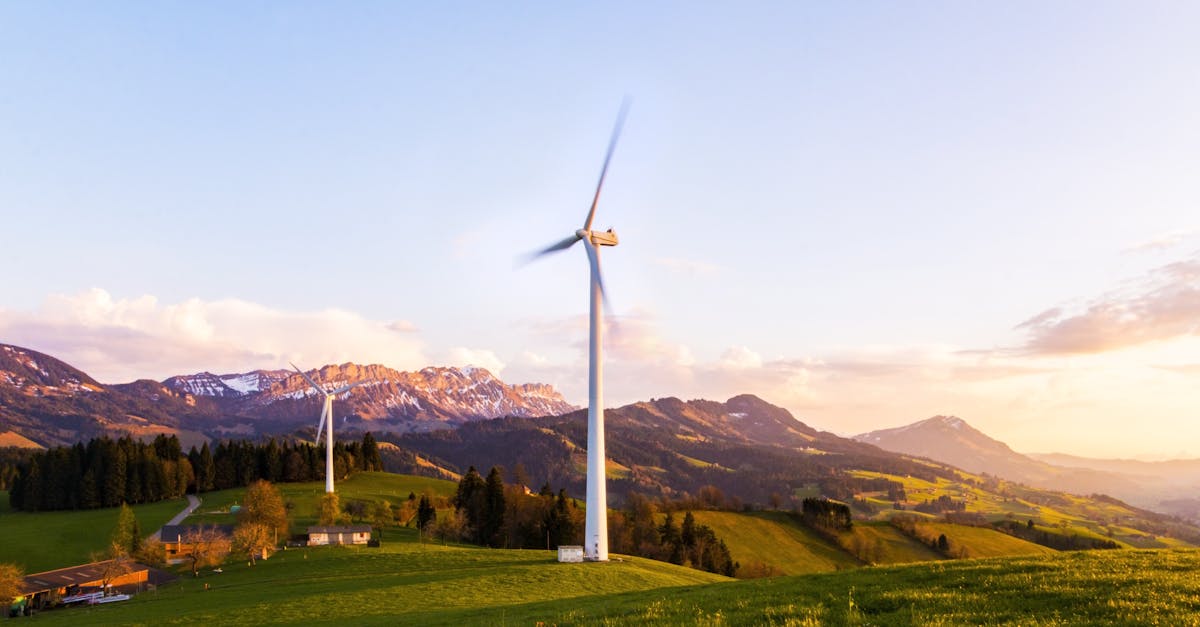Consumers Take Center Stage in the Clean Energy Revolution

Empowering Consumers Through Clean Energy Transitions
The world is facing an urgent climate crisis, and transitioning to clean energy is essential to mitigating its devastating effects. Clean energy technologies, such as solar, wind, and geothermal, offer sustainable and environmentally friendly alternatives to fossil fuels. By empowering consumers through education, advocacy, and financial incentives, we can accelerate the adoption of clean energy and create a more sustainable future.
Thank you for reading this post, don't forget to subscribe!
This article explores the driving forces behind the shift towards clean energy, examines the rise of decentralized energy generation and renewable energy sources, and highlights the importance of energy efficiency. It also discusses the role of consumer engagement and advocacy in shaping energy policies and driving the transition to clean energy. Finally, it examines the role of government policies, financial incentives, and regulatory frameworks in promoting clean energy adoption and consumer empowerment.
1. The Imperative for Clean Energy Transitions
The Imperative for Clean Energy Transitions: Explore the driving forces behind the shift towards clean energy, including climate change mitigation, resource scarcity, and economic opportunities.
The transition to clean energy is driven by a confluence of urgent and compelling factors. Climate change poses an existential threat to our planet, and the burning of fossil fuels is a major contributor to greenhouse gas emissions. Clean energy technologies, such as solar, wind, and geothermal, offer sustainable alternatives that can help mitigate climate change and reduce our reliance on fossil fuels.
Resource scarcity is another driving force behind the shift towards clean energy. Fossil fuels are finite resources, and their extraction and use can have devastating environmental impacts. Clean energy sources, on the other hand, are renewable and abundant, offering a sustainable path to meet our growing energy needs.
Finally, the transition to clean energy presents significant economic opportunities. The development and deployment of clean energy technologies create new jobs, boost economic growth, and reduce our dependence on foreign energy sources. By investing in clean energy, we can create a more sustainable and prosperous future for all.
2. Decentralization and Renewable Energy Sources

Decentralization and Renewable Energy Sources: Examine the rise of distributed energy generation and the growing adoption of solar, wind, and geothermal technologies. Explore case studies of successful renewable energy projects.
The transition to clean energy is not just about replacing fossil fuels with large-scale renewable energy projects. Decentralization and distributed energy generation are also playing a महत्वपूर्ण role. Distributed energy generation refers to the production of electricity from small, often renewable sources, such as rooftop solar panels or small wind turbines, that are located close to the point of use.
Decentralization offers several advantages. It can reduce reliance on centralized power plants and make the grid more resilient. It can also reduce transmission and distribution losses and provide communities with greater energy independence. Renewable energy sources, such as solar, wind, and geothermal, are ideally suited for distributed generation, as they can be deployed in a wide range of locations and scales.
There are numerous successful case studies of renewable energy projects around the world. For example, Germany has been a leader in the adoption of solar energy, with over 100 gigawatts of installed capacity. China has invested heavily in wind energy, and now has the largest installed capacity in the world. Costa Rica has achieved remarkable success in geothermal energy, and now generates over 90% of its electricity from renewable sources.
Solar Energy: Harnessing Sunlight
Solar Energy: Harnessing Sunlight: Delve into the benefits, applications, and technological advancements in solar energy systems, including photovoltaics and concentrated solar power.
Solar energy is one of the most promising renewable energy technologies, offering a clean, sustainable, and abundant source of electricity. Solar energy systems convert sunlight directly into electricity using photovoltaic (PV) cells or concentrated solar power (CSP) systems.
PV systems are made up of semiconductor cells that absorb sunlight and generate an electrical current. PV systems can be installed on rooftops, ground-mounted, or even integrated into building facades. CSP systems use mirrors or lenses to concentrate sunlight onto a receiver, which is then used to heat a fluid and generate steam to drive a turbine.
Solar energy has numerous benefits. It is a clean and renewable source of energy that does not produce greenhouse gases or other pollutants. Solar energy is also becoming increasingly cost-effective, making it a viable option for many businesses and homeowners. Additionally, solar energy can be deployed in a variety of applications, from small-scale rooftop systems to large-scale solar farms.
Wind Energy: Capturing the Breezes
Wind Energy: Capturing the Breezes: Discover the principles, advantages, and environmental considerations related to wind energy, including onshore and offshore wind farms.
Wind energy is another promising renewable energy technology that has the potential to make a significant contribution to our energy needs. Wind turbines convert the kinetic energy of the wind into electricity using aerodynamically designed blades.
Wind energy has several advantages. It is a clean and renewable source of energy that does not produce greenhouse gases or other pollutants. Wind energy is also becoming increasingly cost-effective, making it a viable option for many businesses and communities. Additionally, wind turbines can be deployed in a variety of locations, including onshore and offshore.
However, there are also some environmental considerations associated with wind energy. Wind turbines can have a visual impact on the landscape, and they can also generate noise. Additionally, wind turbines can pose a risk to birds and bats, so it is important to carefully site wind farms to minimize these impacts.
Geothermal Energy: Tapping Earth’s Heat
Geothermal Energy: Tapping Earth’s Heat: Explore the potential, technologies, and sustainability aspects of geothermal energy, focusing on its role in heating, cooling, and electricity generation.
Geothermal energy is a renewable energy source that uses heat from the Earth’s interior to generate electricity or provide heating and cooling. Geothermal energy is a clean and sustainable source of energy that does not produce greenhouse gases or other pollutants.
Geothermal energy can be used to generate electricity using a variety of technologies. One common technology is to use hot water or steam from geothermal reservoirs to drive a turbine. Geothermal energy can also be used to provide heating and cooling for buildings. Geothermal heat pumps can extract heat from the ground in the winter and reject heat to the ground in the summer, providing a very efficient way to heat and cool buildings.
Geothermal energy has the potential to make a significant contribution to our energy needs. However, geothermal resources are not evenly distributed around the world, and development costs can be high. Additionally, geothermal development can have some environmental impacts, such as land use and water use, so it is important to carefully manage geothermal resources.
3. Energy Efficiency: Reducing Consumption, Maximizing Savings
Energy Efficiency: Reducing Consumption, Maximizing Savings: Highlight the importance of energy efficiency measures, including energy-efficient appliances, building insulation, and behavioral changes, in reducing energy demand and costs.
Energy efficiency is one of the most important strategies for reducing our energy consumption and saving money on our energy bills. Energy efficiency measures can be applied to all sectors of the economy, from residential and commercial buildings to industry and transportation.
There are many different ways to improve energy efficiency. Some of the most common measures include:
- Using energy-efficient appliances and equipment
- Insulating buildings to reduce heat loss
- Using energy-efficient lighting
- Making behavioral changes, such as turning off lights when leaving a room or unplugging electronics when not in use
Energy efficiency measures can have a significant impact on our energy consumption and costs. For example, a study by the American Council for an Energy-Efficient Economy found that energy efficiency measures could reduce US energy consumption by 40% by 2030. This would save consumers and businesses trillions of dollars on their energy bills.
Energy-Efficient Appliances: The Smart Choice
Energy-Efficient Appliances: The Smart Choice: Discuss the benefits, standards, and latest advancements in energy-efficient appliances, such as refrigerators, washing machines, and air conditioners.
Energy-efficient appliances can save you money on your energy bills and help reduce your environmental impact. Energy-efficient appliances use less energy to perform the same tasks as traditional appliances, which means they can help you save money on your monthly energy bills.
There are a number of different energy-efficient appliance standards in place around the world. In the United States, the Energy Star program is a voluntary labeling program that helps consumers identify energy-efficient appliances. Energy Star appliances meet specific energy efficiency criteria set by the US Environmental Protection Agency (EPA) and the US Department of Energy (DOE).
The latest advancements in energy-efficient appliances are making them even more efficient than ever before. For example, some new refrigerators use up to 50% less energy than traditional refrigerators. And some new washing machines use up to 75% less energy than traditional washing machines.
When you’re shopping for new appliances, be sure to look for the Energy Star label. Energy Star appliances are a smart choice for your wallet and the environment.
Building Insulation: Keeping the Heat In
Building Insulation: Keeping the Heat In: Explore the different types of building insulation, their effectiveness, and the financial incentives available to promote energy-efficient construction.
Building insulation is an important part of any energy-efficient home. Insulation helps to keep the heat in during the winter and the cool air in during the summer, which can save you money on your energy bills. There are many different types of building insulation available, each with its own advantages and disadvantages.
The most common type of building insulation is fiberglass. Fiberglass insulation is made from tiny glass fibers that are held together by a binder. Fiberglass insulation is relatively inexpensive and easy to install, but it is not as effective as some other types of insulation.
Another common type of building insulation is cellulose insulation. Cellulose insulation is made from recycled paper. Cellulose insulation is more effective than fiberglass insulation, but it is also more expensive and difficult to install.
The most effective type of building insulation is spray foam insulation. Spray foam insulation is made from a polyurethane foam that is applied to the building’s walls and roof. Spray foam insulation is very effective at keeping the heat in, but it is also the most expensive type of insulation.
There are a number of financial incentives available to promote energy-efficient construction. In the United States, the federal government offers a tax credit for the installation of energy-efficient appliances and building insulation. Many states and local governments also offer financial incentives for energy-efficient construction.
If you are planning to build a new home or remodel your existing home, be sure to consider adding insulation to your walls and roof. Insulation can help you save money on your energy bills and make your home more comfortable.
Behavioral Changes: Empowering Consumers
Behavioral Changes: Empowering Consumers: Emphasize the role of consumer behavior in reducing energy consumption, including simple actions like turning off lights, unplugging devices, and adopting energy-conscious habits.
Consumer behavior plays a significant role in reducing energy consumption. Simple actions, such as turning off lights when leaving a room, unplugging devices when not in use, and adopting energy-conscious habits, can make a big difference. According to the US Environmental Protection Agency (EPA), these simple actions can save the average household up to 10% on their energy bills.
Here are a few tips for reducing energy consumption through behavioral changes:
- Turn off lights when leaving a room.
- Unplug devices when not in use.
- Use energy-efficient appliances and light bulbs.
- Take shorter showers.
- Wash clothes in cold water.
- Line dry clothes instead of using a dryer.
- Cook meals at home instead of eating out.
- Drive less and walk or bike more.
By making small changes to our daily routines, we can all help to reduce energy consumption and save money on our energy bills.
4. Consumer Empowerment and Advocacy

Consumer Empowerment and Advocacy: Discuss the importance of consumer engagement, education, and advocacy in shaping energy policies and driving the transition to clean energy.
Consumers play a vital role in shaping energy policies and driving the transition to clean energy. Through engagement, education, and advocacy, consumers can make their voices heard and influence the decisions that are made about our energy future.
Consumer engagement is essential for ensuring that energy policies reflect the needs and priorities of the people they serve. Consumers can get involved in the policymaking process by attending public hearings, commenting on proposed regulations, and meeting with their elected representatives. By making their voices heard, consumers can help to ensure that energy policies are fair, equitable, and sustainable.
Consumer education is also essential for empowering consumers to make informed choices about their energy use. Consumers need to understand the different energy options available to them, the environmental impacts of different energy sources, and the financial implications of their energy choices. By providing consumers with accurate and unbiased information, we can help them to make decisions that are in their best interests and the best interests of the planet.
Consumer Education: Raising Awareness
Consumer Education: Raising Awareness: Highlight the role of educational campaigns, workshops, and online resources in increasing consumer knowledge about clean energy technologies and practices.
Consumer education is essential for empowering consumers to make informed choices about their energy use. Consumers need to understand the different energy options available to them, the environmental impacts of different energy sources, and the financial implications of their energy choices. By providing consumers with accurate and unbiased information, we can help them to make decisions that are in their best interests and the best interests of the planet.
There are a number of different ways to educate consumers about clean energy. Educational campaigns can be used to raise awareness of the benefits of clean energy and to provide consumers with information about the different clean energy options available to them. Workshops can be used to provide consumers with hands-on experience with clean energy technologies. And online resources can be used to provide consumers with access to a wealth of information about clean energy.
By investing in consumer education, we can help to create a more informed and engaged citizenry that is better equipped to make decisions about our energy future.
Consumer Advocacy: A Voice for Change
Consumer Advocacy: A Voice for Change: Explore the power of consumer advocacy groups in influencing energy policies, promoting clean energy initiatives, and safeguarding consumer rights.
Consumer advocacy groups play a vital role in shaping energy policies and driving the transition to clean energy. These groups represent the interests of consumers and work to ensure that their voices are heard in the policymaking process. Consumer advocacy groups use a variety of tactics to achieve their goals, including:
- Lobbying elected officials
- Testifying at public hearings
- Submitting comments on proposed regulations
- Educating consumers about energy issues
- Mobilizing consumers to take action
By working together, consumer advocacy groups have been able to achieve a number of important victories, including:
- The passage of laws that promote clean energy and energy efficiency
- The defeat of proposals that would have raised energy costs for consumers
- The establishment of consumer protection regulations
Consumer advocacy groups are a powerful force for change. By speaking up for consumers, these groups help to ensure that our energy policies are fair, equitable, and sustainable.
Community Energy Projects: Local Ownership
Community Energy Projects: Local Ownership: Showcase successful examples of community-based energy projects, such as solar cooperatives and microgrids, that empower consumers and foster local energy independence.
Community energy projects are a powerful way to empower consumers and foster local energy independence. These projects are typically owned and operated by the community members who benefit from them, and they can provide a number of benefits, including:
- Lower energy costs
- Increased energy security
- Reduced environmental impact
- Community ownership and control
There are a number of different types of community energy projects, including:
- Solar cooperatives: These cooperatives allow community members to pool their resources to purchase and install solar panels. The solar panels are then used to generate electricity for the members of the cooperative.
- Microgrids: These small, self-contained electrical grids can provide electricity to a community even when the main power grid is down. Microgrids can be powered by a variety of renewable energy sources, such as solar and wind power.
Community energy projects are a valuable tool for empowering consumers and reducing our reliance on fossil fuels. By investing in these projects, we can create a more sustainable and equitable energy future.
5. Financial Incentives and Policy Frameworks
Financial Incentives and Policy Frameworks: Examine the role of government policies, financial incentives, and regulatory frameworks in promoting clean energy adoption and consumer empowerment.
Government policies, financial incentives, and regulatory frameworks play a critical role in promoting clean energy adoption and consumer empowerment. By providing financial incentives and creating supportive regulatory frameworks, governments can make it easier for consumers to adopt clean energy technologies and practices.
Financial incentives can help to reduce the upfront costs of clean energy technologies, making them more affordable for consumers. These incentives can take a variety of forms, including tax credits, rebates, and grants. For example, the US federal government offers a 30% tax credit for the installation of solar panels.
Regulatory frameworks can also play a significant role in promoting clean energy adoption. These frameworks can set standards for the performance of clean energy technologies, provide financial incentives for clean energy development, and create markets for clean energy. For example, many states have adopted renewable portfolio standards (RPS) that require utilities to generate a certain percentage of their electricity from renewable energy sources.
Government Policies and Regulations
Government Policies and Regulations: Discuss the impact of feed-in tariffs, tax credits, renewable portfolio standards, and other government initiatives on the clean energy sector.
Government policies and regulations play a significant role in shaping the development of the clean energy sector. These policies and regulations can provide financial incentives for clean energy development, set standards for the performance of clean energy technologies, and create markets for clean energy. Some of the most common types of government policies and regulations include:
- Feed-in tariffs: Feed-in tariffs are payments made to renewable energy generators for each unit of electricity they generate. These tariffs are designed to make renewable energy more affordable and to encourage the development of new renewable energy projects.
- Tax credits: Tax credits are deductions from the amount of taxes that a taxpayer owes. Tax credits can be used to offset the cost of installing clean energy technologies, such as solar panels and electric vehicles.
- Renewable portfolio standards: Renewable portfolio standards (RPS) require utilities to generate a certain percentage of their electricity from renewable energy sources. RPS have been a major driver of the growth of the clean energy sector in the United States.
Financial Incentives for Consumers
Financial Incentives for Consumers: Explore the various financial incentives available to consumers, including rebates, grants, and low-interest loans, that encourage the adoption of clean energy technologies.
Financial incentives can play a significant role in encouraging consumers to adopt clean energy technologies. These incentives can reduce the upfront costs of clean energy technologies, making them more affordable for consumers. Some of the most common types of financial incentives available to consumers include:
- Rebates: Rebates are payments made to consumers after they purchase and install clean energy technologies. Rebates are typically offered by utilities, state and local governments, and manufacturers of clean energy technologies.
- Grants: Grants are payments made to consumers to help them cover the cost of purchasing and installing clean energy technologies. Grants are typically offered by government agencies and non-profit organizations.
- Low-interest loans: Low-interest loans are loans that have interest rates that are below market rates. Low-interest loans can be used to finance the purchase and installation of clean energy technologies.
Regulatory Frameworks for Grid Integration
Regulatory Frameworks for Grid Integration: Examine the regulatory frameworks that govern the integration of renewable energy sources into the grid, ensuring reliability, stability, and consumer protection.
Regulatory frameworks play a critical role in ensuring the reliable and stable integration of renewable energy sources into the grid. These frameworks set standards for the performance of renewable energy technologies, establish rules for the operation of the grid, and protect the rights of consumers.
Some of the key elements of regulatory frameworks for grid integration include:
- Technical standards: Technical standards define the performance requirements for renewable energy technologies. These standards ensure that renewable energy technologies are safe, reliable, and compatible with the grid.
- Grid codes: Grid codes define the rules for the operation of the grid. These codes ensure that the grid remains stable and reliable, even when there is a high penetration of renewable energy sources.
- Consumer protection regulations: Consumer protection regulations protect the rights of consumers who purchase renewable energy. These regulations ensure that consumers are not overcharged for renewable energy and that they have access to reliable and affordable energy.
6. Empowering Consumers: The Future of Clean Energy
Empowering Consumers: The Future of Clean Energy: Conclude with a forward-looking perspective on the future of clean energy, emphasizing the role of empowered consumers in driving innovation, sustainability, and a more equitable energy landscape.
Empowered consumers are the key to a clean energy future. By understanding their energy options, advocating for clean energy policies, and investing in clean energy technologies, consumers can drive innovation, sustainability, and a more equitable energy landscape.
The future of clean energy is bright. The cost of clean energy technologies is declining, and the performance of these technologies is improving. As a result, clean energy is becoming increasingly affordable and accessible for consumers. Additionally, governments around the world are adopting policies that support the development and deployment of clean energy technologies.
Empowered consumers will play a vital role in shaping the future of clean energy. By making informed choices about their energy use, consumers can help to create a more sustainable and equitable energy future for all.




